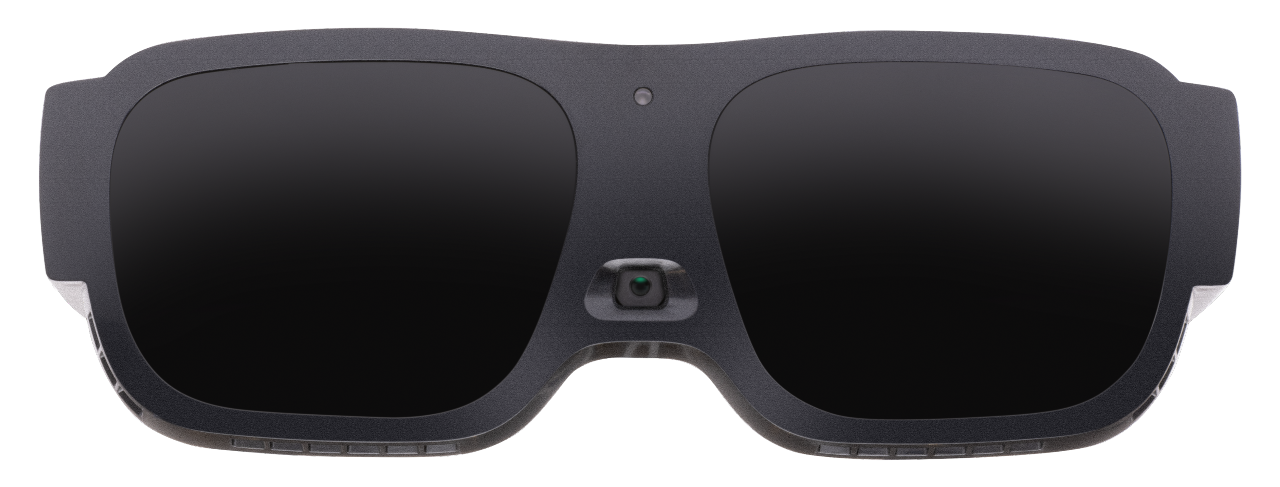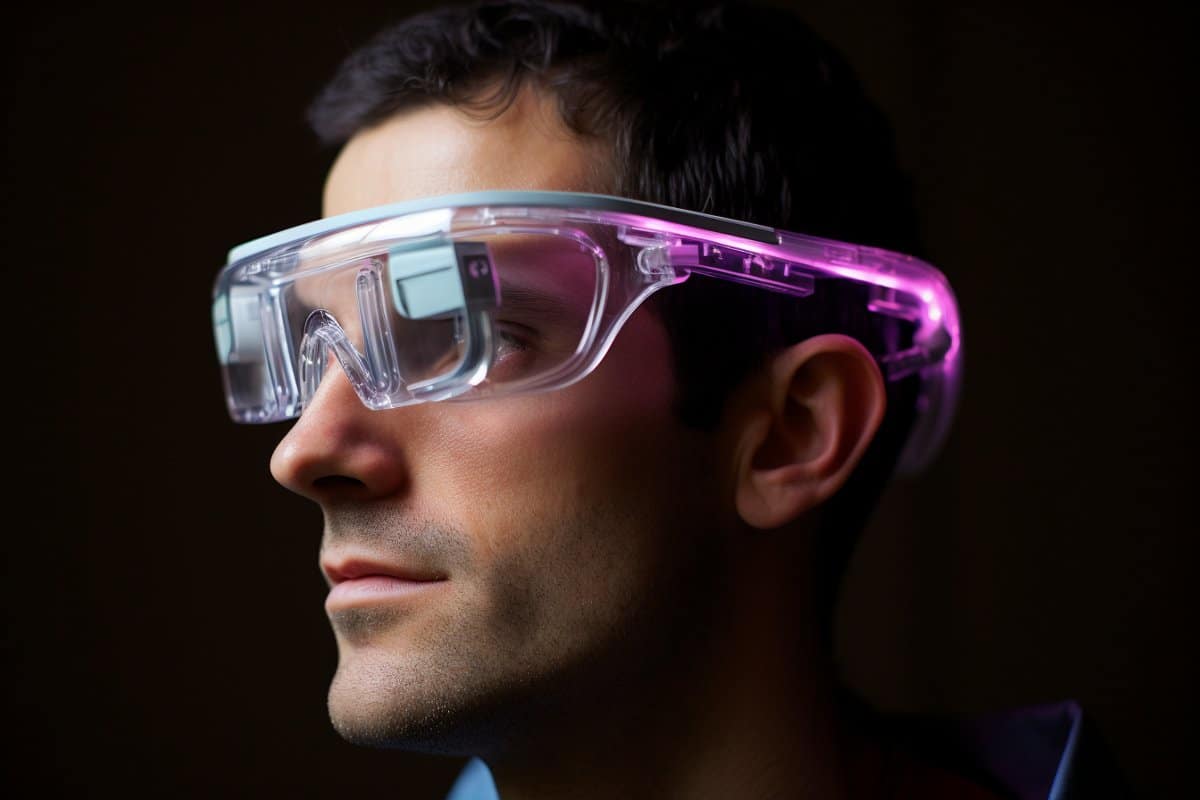Discover Advanced Assistive Instruments for People With Aesthetic Problems
The landscape of assistive technology for individuals with visual disabilities is progressing swiftly, presenting an array of cutting-edge tools that enhance autonomy and involvement. From clever glasses that perfectly combine visual input with auditory support to innovative navigating applications that redefine spatial recognition, these devices are improving possibilities.
Smart Glasses Innovations
Smart glasses represent a considerable development in assistive innovation for people with aesthetic problems. Geared up with sensing units and video cameras, wise glasses can capture real-time visual info, which is then processed and conveyed to the customer through audio feedback or haptic feelings.
Additionally, innovations in expert system have actually further enhanced the abilities of wise glasses. Artificial intelligence algorithms can recognize faces, checked out message, and determine objects, making them important devices for everyday tasks. Individuals can obtain acoustic hints that provide context about their environment, fostering freedom and self-confidence.
Furthermore, the ergonomic layout and light-weight nature of several wise glasses make them ideal for prolonged use, guaranteeing convenience while improving capability. As these devices remain to evolve, they hold the prospective to transform the way individuals with visual disabilities experience their day-to-days live, linking the void between accessibility and modern technology. The recurring r & d in this field guarantee to increase the possibilities for smart glasses, making them an important element of modern-day assistive gadgets.
Navigation Apps and Tools
Numerous navigating apps and tools have actually become essential resources for people with aesthetic disabilities, dramatically enhancing their capability to pass through unknown atmospheres. These technologies utilize GPS capability, audio cues, and real-time data to supply customers with exact navigation assistance.
One popular instance is the Aira application, which connects users to experienced representatives that can offer visual descriptions of environments and navigation support with a live video feed. This service enhances the customer's spatial awareness and confidence while navigating. An additional significant tool is Seeing Eye GPS, which offers voice-guided navigating and sights, allowing customers to gain access to essential information about their surroundings.

As technology remains to breakthrough, the development of more innovative navigation devices assures to additional equip individuals with aesthetic impairments, helping with seamless movement and assimilation right into varied environments. Such developments contribute in promoting a much more inclusive society.
Braille Modern Technology Advancements
In current years, improvements in Braille technology have actually considerably transformed exactly how people with visual disabilities gain access to details and engage with the world around them. The advancement of mobile Braille screens has changed reading more info here by enabling users to link wirelessly to computer systems, mobile phones, and tablet computers. These devices convert message into Braille in real-time, enabling seamless communication with digital web content.
Furthermore, cutting-edge Braille printers have arised, boosting the production of responsive materials. Modern embossers are quicker and more efficient, permitting the fast creation of Braille documents and academic products. This effectiveness minimizes the moment and price connected with generating Braille resources, making them extra accessible to schools and organizations.
Additionally, the combination of Braille with other innovations, such you can find out more as expert system and artificial intelligence, has actually opened brand-new opportunities for personalized discovering experiences. Voice acknowledgment and synthesis innovations can enhance Braille, giving an inclusive approach to information dissemination.
As the demand for inclusive education and learning and office environments grows, these technical improvements play an essential duty in equipping people with aesthetic problems, ensuring they have equivalent access to details and opportunities in various elements of life.
Wearable Instruments for Freedom
An expanding selection of wearable gadgets is improving independence for people with aesthetic impairments, supplying ingenious remedies that boost navigation and daily living. Braille displays and notetakers. These tools make use of sophisticated modern technologies to give real-time feedback and assistance, promoting autonomy in numerous environments

Wearable technology additionally consists of smartwatches that can be set with accessibility features, enabling users to get alerts, track their locations, or perhaps ask for assistance with the touch of a button. Some tools integrate fabricated intelligence to examine the atmosphere, offering audio summaries of close-by items or individuals.
Voice-Activated Assistive Solutions
Leveraging voice-activated assistive services has actually changed the landscape of assistance for individuals with visual disabilities, supplying hands-free communication and accessibility to a selection of tasks. These modern technologies utilize all-natural language handling and synthetic intelligence to enable customers to execute daily tasks through simple voice commands.

Moreover, recent improvements in voice acknowledgment precision have improved the user experience substantially, accommodating varied accents additional hints and speech patterns. This inclusivity makes sure that more people can gain from these modern technologies, fostering a better feeling of freedom.
Conclusion
In final thought, the advancement of advanced assistive devices dramatically improves the freedom and lifestyle for individuals with visual problems. Innovations such as smart glasses, navigation apps, Braille technology, wearable devices, and voice-activated services jointly promote an even more comprehensive setting. These technologies encourage users to navigate their environments with confidence and involve more completely with the globe, eventually advertising greater access and level playing fields for people facing visual obstacles.
The landscape of assistive innovation for individuals with visual disabilities is developing quickly, providing a variety of cutting-edge devices that improve freedom and engagement.Smart glasses represent a considerable improvement in assistive innovation for people with visual impairments. As these tools proceed to develop, they hold the prospective to change the method people with visual impairments experience their day-to-day lives, connecting the gap between ease of access and technology.In current years, developments in Braille innovation have substantially changed exactly how people with aesthetic disabilities gain access to information and engage with the globe around them. These technologies empower individuals to navigate their environments with self-confidence and engage even more fully with the world, eventually advertising better access and equivalent possibilities for people dealing with visual challenges.